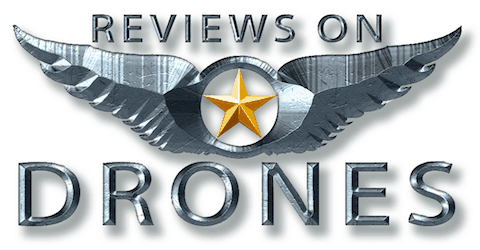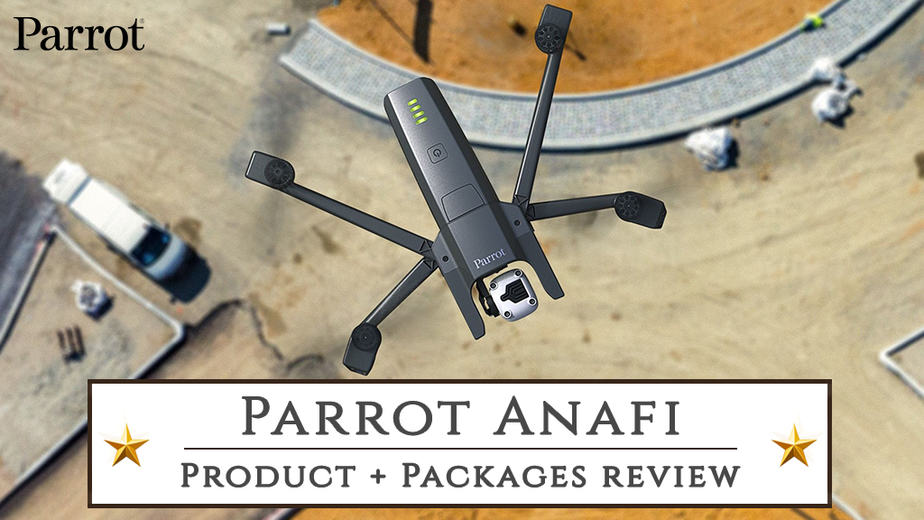
French manufacturer Parrot has produced popular fun drones since officially entering the market in 2014 – and with their latest model, they have certainly made a statement that they’re now ready to compete with the best in the business – as a maker of ‘serious drones’.
The release of the Parrot Anafi range of drones in July 2018, has provided an outstanding platform on which the company can now build, and this is best highlighted when you consider the FIVE well-priced and highly-spec’d purchasing options currently available to you online.
#1. Parrot Anafi Standard · #2. Parrot Anafi FPV · #3. Parrot Anafi Extended · #4. Parrot Anafi Work · #5. Parrot Anafi Thermal
Now, if you want to read up on the manufacturers official specifications, click here. However… we all know that most companies like to show what their products have the potential to do, and this isn’t always reflected in real world data.
So, what you’re about to read is our take on the Parrot Anafi range based on our own flight testing experiences and research; plus a comparison of the different package options; what we like, what we don’t; and our honest view on whether we think this drone might be a good buy for you.
Before we get started though, and for those of you curious to know what the Anafi’s official Key Specifications are, here’s a quick glance list that has been taken directly from Parrot’s website, to make things easy for you.
Key Specifications

Camera Resolution
4K HDR 21MP

Video Resolution
4K Cinema 24fps

Gimbal
180° tilt 3-axis IS.

Battery Life
25-minutes

Spare Battery
Included

Sensors
GPS + GLONASS

Max. Speed
34mph / 55kph

Max. Distance
2.5miles / 4km

Max. Weight
320g / 11.29oz
Introducing the Anafi Range
As mentioned, there are five well-priced and highly-spec’d purchasing options currently available, and each have an appropriate place on the shelf.
Parrot Anafi Standard Package (1/5)
The first option available to you is the Parrot Anafi Standard package, which will set you back around the US$599 price point. This is the least expensive of the Anafi packages, and from our research it’s the package that most new enthusiasts typically end up buying. We’re going to dive deeper into this base package a little later in the review.
Parrot Anafi FPV Package (2/5)
The second package is the Parrot Anafi FPV drone (First Person View) and this will cost you around US$200 more than the Standard package, at about US$799. Again, we’ll grapple with the specs and performance later, but for now it’s worth noting that the FPV package facilitates a more immersive flying experience due to its very nature of having on-the-face goggles – so what the drone sees, is exactly what you see – and is definitely the most complete Anafi package.
WARNING: Be cautious when watching the official Anafi FPV trailer video below, as it will almost definitely have you scrambling to find your credit card so you can buy one today!!
Parrot Anafi Extended Package (3/5)
If you’re a more experienced drone enthusiast who feels it’s non-negotiable to have additional accessories such as spare batteries for longer flight times or extra propellers, then the Parrot Anafi Extended package could be the one for you. The Extended package will cost you around US$300 more than the standard package, at about US$899, and it’s often worth the extra investment for experienced pilots, as they typically want more time in the air, so those spare batteries and props do get used.
NOTE: As a team, we’ve been enjoying the FPV flight experience for several years, and it’s for this reason that if it was our money, of the first three packages highlighted above, we’d probably invest in the FPV package and add on the appropriate accessories required to bring it up to the standards of the Extended package. We appreciate this would boost the cost, but in our view, it would be absolutely worth it for our needs and we’d suggest you consider looking into this as an option as well.
Parrot Anafi Work Package (4/5)
Next we have the Parrot Anafi Work package, at a cost of around US$949. This package is for the drone professionals who are looking to make better informed decisions using the drone’s aerial insights, and not those classed as casual drone enthusiasts – although we do acknowledge there are some features in this package that might convince you this drone is worth the investment.
Parrot Anafi Thermal Package (5/5)
And finally, we have the final package in the range, and it’s titled the Parrot Anafi Thermal .
Now, to be clear, this really is an amazing drone, but it has a specific purpose – it’s been designed to capture imagery from the air that’s both the visible and the invisible (using it’s revolutionary thermal technology), with it’s TWO onboard cameras.
The Anafi Thermal also comes with a lofty price tag of just under US$2,000, but if you’re investing in this drone, it’s likely going to be a commercial purchase and you’re most probably going to be using it for business purposes, such as security, construction, environmental, conservation, etc.
If the concept has caught your attention, check out this short video clip of the Thermal in action at the Mankwe Wildlife Reserve in South Africa, so you can see how the technology performs. It’s truly fascinating!
Our Focus Today
To cater for the majority of you, and so this doesn’t turn into a 60-minute read, we’ve chosen to focus on what you’d be getting from the THREE most popular packages in the range – the Anafi Standard package, the Anafi FPV package, and the Anafi Extended package.
What’s In The Box?
To kick things off, lets look at what you can expect when you open the box. We’ve highlighted some of the differences between the Standard, the FPV, and the Extended package, in yellow below.
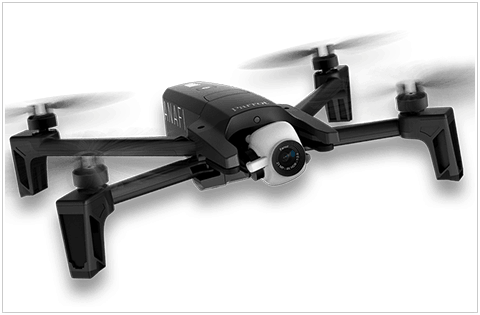
- Parrot Anafi
Standard Package - 1x Standard Anafi Drone1x Skycontroller Controller 31x Smart Battery1x Carry Case1x 16GB Micro-SD Card1x USB-A to USB-C Cable8x Additional Propellor Blades1x Drone Mounting Tool

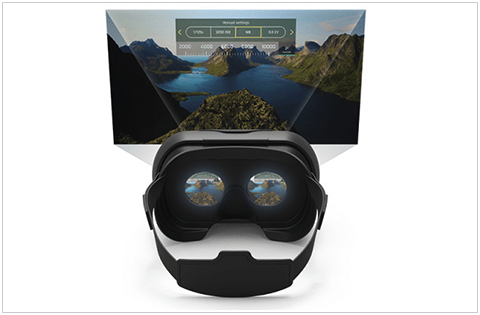
- Parrot Anafi
FPV Package - 1x FPV Anafi Drone1x Skycontroller Controller 31x Smart Battery1x Backpack1x 16GB Micro-SD Card1x USB-A to USB-C Cable8x Additional Propellor Blades1x Drone Mounting Tool1x FPV Cockpitglasses 3
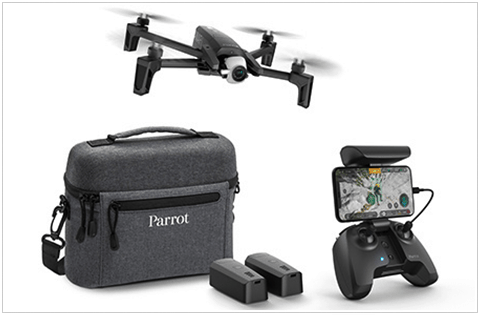
- Parrot Anafi
Extended Package - 1x Standard Anafi Drone1x Skycontroller Controller 33x Smart Batteries1x Compact Travel Bag1x 16GB Micro-SD Card3x USB-A to USB-C Cables8x Additional Ultra-Quiet Propellor Blades1x Drone Mounting Tool1x SD Adapter
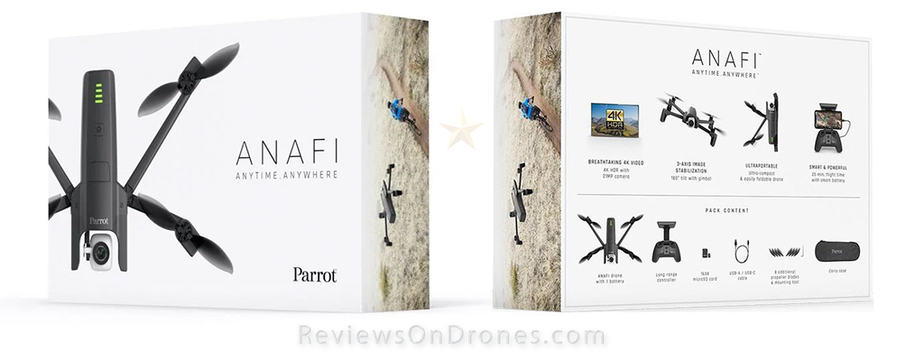
Anafi Build / Body / Weight
There are two key aspects to note about the Anafi drone body. (Which looks a little like an overgrown mosquito by the way! Fortunately it doesn’t sound like one – it’s literally one of the quietest drones on the market!)
#1 – All four drone body arms fold away. This means travel and portability is good, with folded dimensions of just 24.4cm x 6.7cm x 6.5cm on the Standard and Extended, and 21.8cm x 6.9cm x 6.4cm on the FPV.
Note that the unfolded dimensions on the Standard and Extended are 17.5cm x 24cm x 6.5cm, and on the FPV are 24.1cm x 31.5cm x 6.4cm.
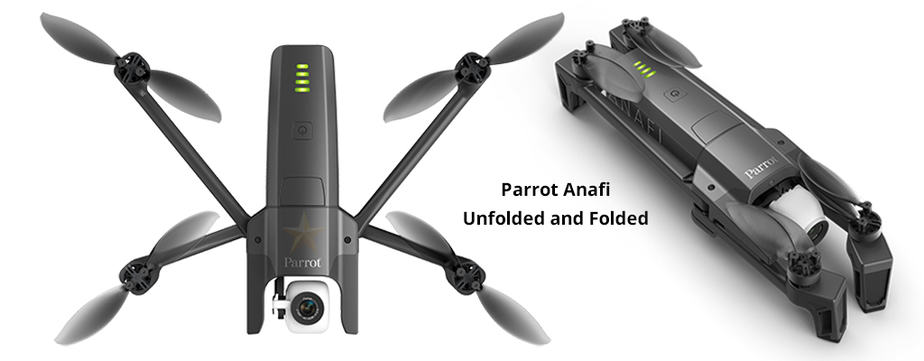
#2 – The total maximum weight of the drone is 320g. That’s 320g for the Standard and Extended, and 5g less at 315g on the FPV – which for a drone of this build quality, and with the high-spec features it offers, is super light. Parrot highlight that this is achieved thanks to the “carbon fibers of the structure being charged with empty glass microbeads that are filled with air and resist bumps and knocks”.
We should also mention that in our opinion, the Parrot Anafi drone body, regardless of the package you purchase, is professionally finished to a higher standard than most at this price point… and should you decide the Anafi is the drone for you, we’re confident you’ll not be left feeling like you’ve purchased a toy.
Anafi Carry Cases
All three Anafi packages come with a highly durable travel case in one form or another. The Anafi Standard includes a Carry Case, pictured left below – the Anafi FPV includes a Backpack, pictured in the center – and the Anafi Extended includes a Travel Bag, pictured on the right.
One of the things we didn’t like about the Standard package is that the Carry Case is only big enough to carry the actual drone, and nothing else. This means you’d need to put your Skycontroller plus any other accessories such as spare batteries and props, in a separate second bag.
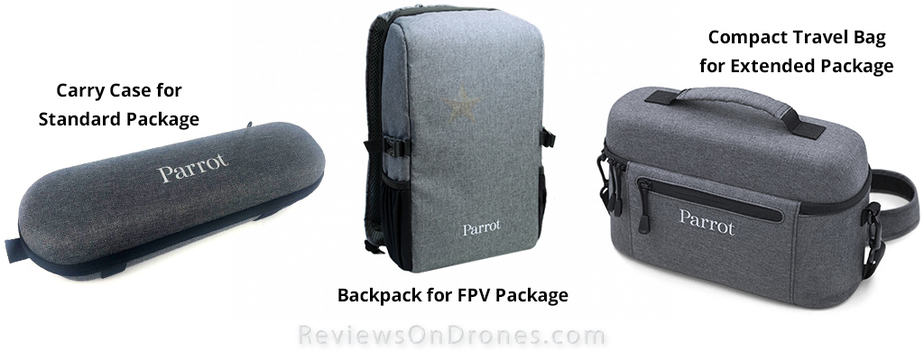
Anafi In Flight
All Parrot Anafi models have a built-in GPS (Global Positioning Chip) with GLONASS (Global Navigation Satellite System) satellite tracking.
If this is the first time you’ve heard of the technology, in simple terms GLONASS stands for Globalnaya Navigazionnaya Sputnikovaya Sistema and is Russia’s version of GPS. GPS is widely regarded as slightly better than GLONASS with its overall positional accuracy, but GLONASS has better accuracy at higher latitudes (far north or south).
Having the ability to dual connect to both, virtually removes the possibility of you losing signal connection to your drone and makes your Anafi more stable, especially at high altitude, and your flight more enjoyable.
When your Anafi is switched on outdoors, the right GPS icon on the top bar of the Parrot FreeFlight 6 app, changes from red to green to show it is connected to the satellites. Before any outdoor flight, we recommend that you wait until your GPS signal is confirmed (GPS icon of the drone turns green) before taking off. This will also allow you to use the Smart Return To Home (RTH) feature if needed.
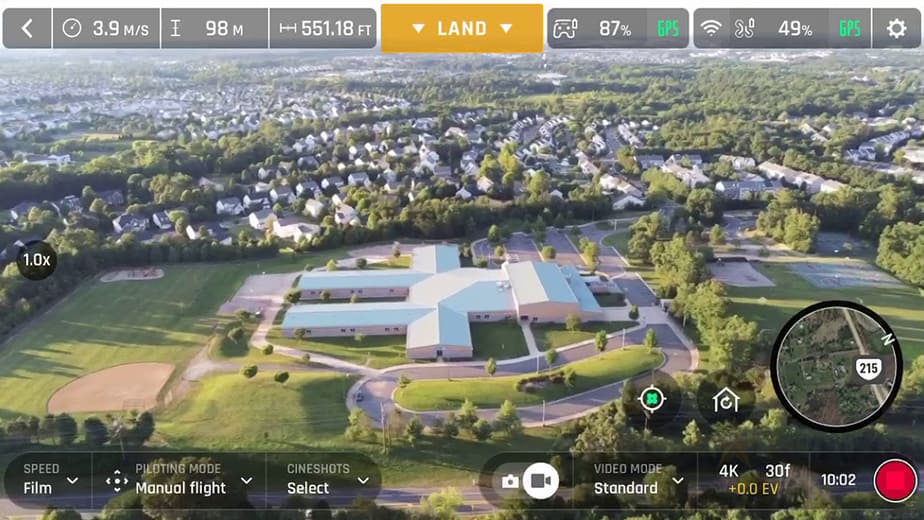
Anafi Camera
Photographers and videographers of all levels will love each of the three packages in the Anafi range… as the advanced 4K HDR imaging system provides an outstanding platform for pilots who seek professional looking cinematography, without the lofty price tag.
The Anafi is reportedly the first consumer drone to feature a high tech 180° vertical tilt gimbal with 3-axis image stabilization, allowing the pilot to capture ultra-stable videos and photos from almost every angle imaginable.
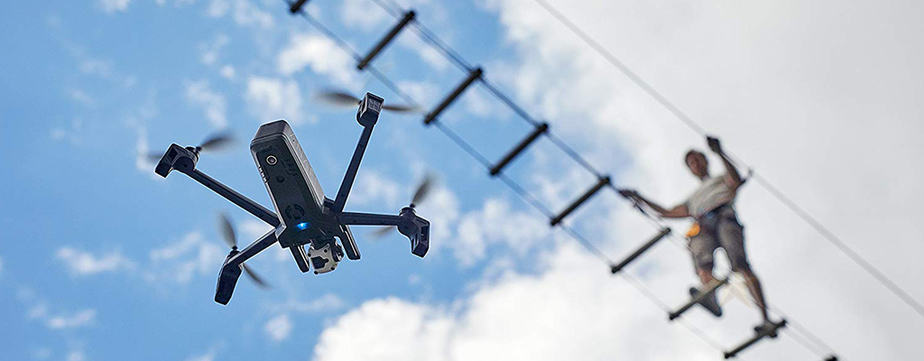
The integrated camera offers stunning 4K HDR videos with 100Mbps bitrate and ultra sharp 21MP photos through its wide-angle aspherical lens… and features Parrot’s innovative zoom technology which enables up to 2.8X lossless digital zoom in full HD (equivalent to an optical zoom).
It’s worth noting that the zoom on the FPV drone is a little greater than that which you will get on the Standard drone. It extends to gives you 3X zoom, as opposed to 2.8X zoom… a minor difference and we found both to be impressive.
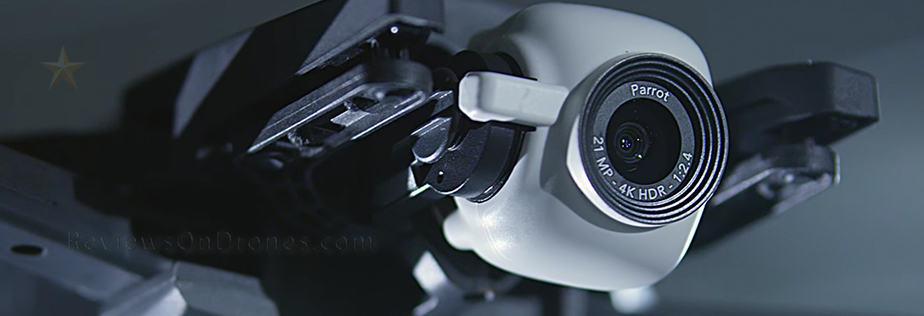
From our tests, the imaging system is one of the best we’ve found on a consumer drone in this price range, and if you’re a beginner pilot, you do stand a good chance of achieving similar rates of success to those who have been exploring the skies for several years.
Take a moment to watch this short video from Parrot which reveals some of the breathtaking image technology behind the Anafi drone.
Anafi Micro SD Card Holder
All Anafi drones come with a 16GB Micro SD card pre-installed in the drone, meaning you can save a full 25 minute flight in 4K video… and if you change the battery, you’ll even be able to record and save parts of your second flight as well, but not all.
We recommend having a laptop or external storage device on hand to transfer the recorded contents of your flight from the card to the device, between flights.
This can be done easily by removing the battery from the drone, then lifting the small metal flap – similar to how you used to load and unload SIM cards into mobile phones (for those old enough to remember that!) – to reveal and release the Micro SD card, and once your footage is transferred, returning it to the same location ahead of your next flight.
To be honest, this isn’t too complicated and won’t present issues for most pilots who’ll likely be changing batteries at the same time anyway. However, we forgot to do this on one of our flights and it was a bit of a pain having to return to home and remove the battery just to get access to the Micro SD card. But we managed!
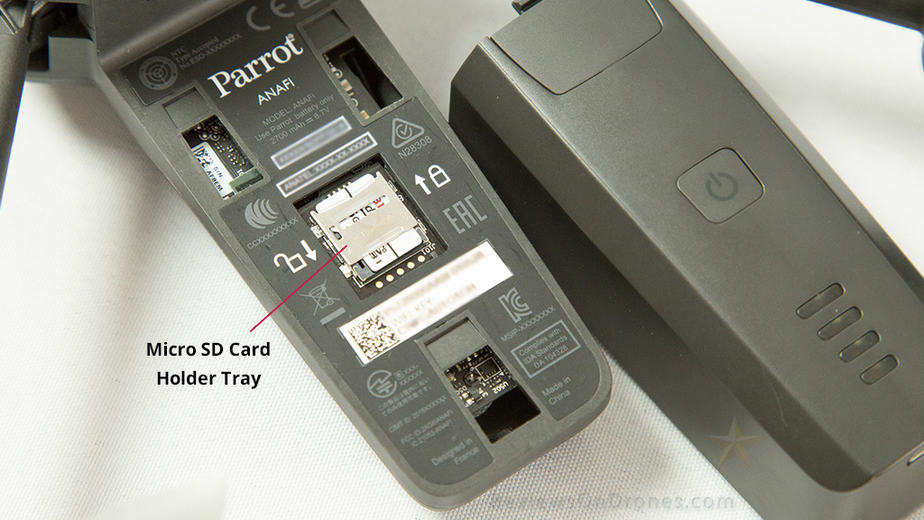
Anafi Drone Performance
When it comes to performance, the good news is all three Anafi packages produce virtually the same stats – the only difference being the result you get from the task you’re doing and features you’re using.
Assuming you’ll be controlling the drone from Parrot’s Skycontroller and connected to their Freeflight 6 App using your mobile device, Parrot claim you’ll be able to reach a maximum transmission distance of around 4km from home point.
We tested this and fell just short, at 3.3km, plus we also experienced breakup on the feed to our FPV goggles at around 3.1km… however, weather conditions would have played a part in our result as it was early morning on a cold day (around 7°C) and there was a wind chill running across us of about 10kph.

We did have a spotter at around the 4km mark so managed to maintain complete line of sight throughout the primary flight, and we’re confident that on a different day, under better weather conditions, we’d have gone close to the official distance. But the reality is, 99% of pilots won’t need to go anywhere near that far from the home point, and in our opinion just getting to the 3km+ landmark was still impressive.
It’s also worth mentioning that not every country in the world allows you to legally fly that distance anyway, and so we recommend you check with your local flight authorities if you plan to do something like this (even as a hobbyist), to ensure you aren’t breaking any aviation rules.
In terms of flight time, Parrot claim you’ll get 25 minutes flight time with your Standard and Extended packages, and 26 minutes when flying your Anafi FPV. In our test flights with the FPV, we averaged just under 25 minutes from each of our three batteries, which is close enough and we were happy with the result.
For you to get similar results, you’ll need to be mindful of weather conditions, and remember that wind in particular does contribute to performance. The entire Anafi range boasts a maximum wind resistance of 50kph, which is unprecedented on most drones at this price point. We recommend you gauge your flight time in windy conditions with your experience as a pilot. The last thing you want is a lost, crashed or damaged drone because those high winds simply got the better of you!
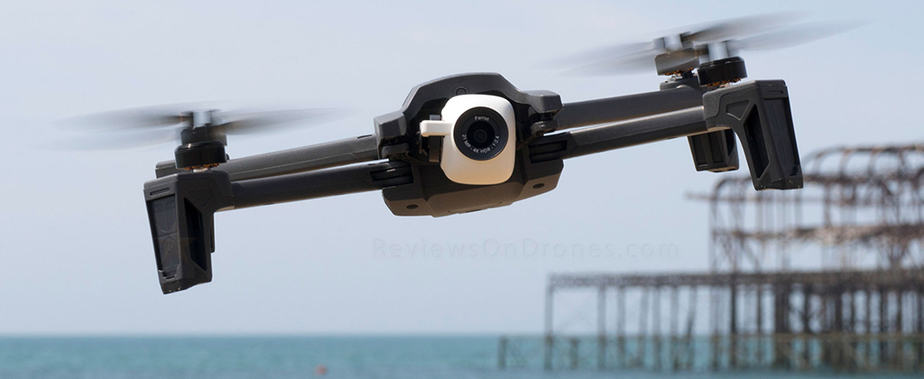
The final performance metric to discuss is speed, and you can expect to get up to 55kph when flying the Anafi in Sport Mode. Unfortunately we didn’t have our speed gun with us so we couldn’t test this, but based on our extensive experience, we’re confident we were flying close to 55kph!
Parrot also report that their Anafi range has an impressive vertical speed of 4 meters per second, and can fly about 4.5km above sea level. Again, we didn’t test either of these two, but we do know that if accurate, you’ll struggle to find anything that matches that with this quality and in the same price range.
Anafi Flight Modes + Safety Features
In our experience, novice pilots typically go a little harder when flying a US$50 drone. It’s almost like they have zero fear of loss should the drone crash or fall out of the sky.
But put those same pilots into a US$1,000 drone, and the game changes. There’s the thoughts of “gosh I’d better not crash this thing, it’s expensive!” – and it’s usually accompanied by extreme concentration, an elevated heart rate and sometimes even a few beads of sweat.
Well our guess is Parrot considered this, and wanted to make sure that whether you’re flying your drone for the first time, or the hundredth time, it would and should be safe and fun, with nothing left to chance during flight…
And so, thanks to the Anafi’s embedded Artificial Intelligence system, there are a stack of pre-programmed automated flight modes and safety features for the pilot to choose from to make sure this happens. And when we say a stack of them, we mean it! Check these out:
GEOFENCE – gives you the option to fly within a set designated area, created by you. This ensures you should never lose the drone, and if for some bizarre reason you lose connectivity, finding it should be fairly straight forward because you will have already pre-framed your flight zone.
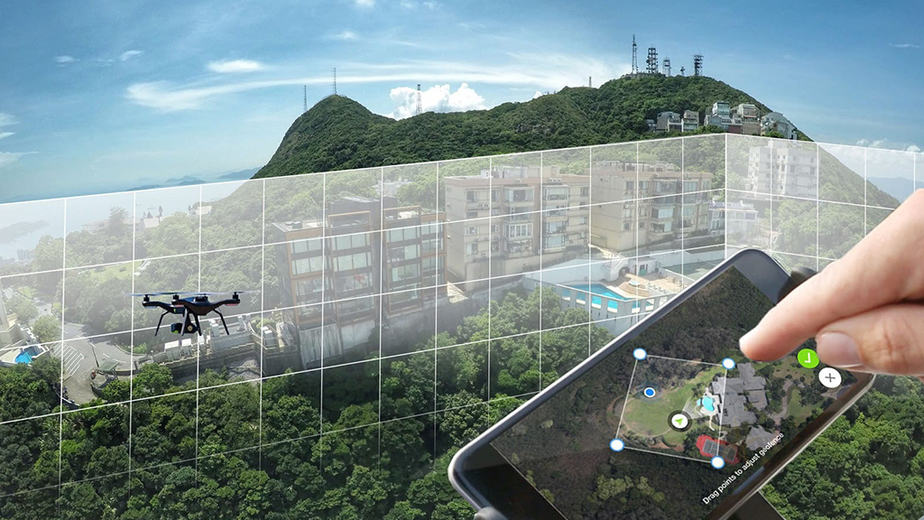
SMART RTH – is also known as Smart Return To Home, and is now a common inclusion on most modern consumer drones, including the entire Anafi range. Beyond the drone being intelligent enough to compensate for a loss of connection, Smart Return To Home also acts as a failsafe should your battery be close to powering down. This basically means your Anafi will monitor how far it is from the home point and how much life remains in the battery, and automatically Return To Home before it loses complete power.
FIND MY DRONE – is available in the unlikely event that you lose sight of or even full connection of your drone. With the click of a button, you’re able to get your Anafi to beep loudly enough for you to try and locate it – and this is accompanied by a map on your display that will help you trace and retrieve it.
These three flight modes are chosen from your Skycontroller display using the Freeflight 6 App if you’re flying the Standard or Extended, and the Freeflight 6.6 App if you’re flying the FPV. Both Apps can be downloaded directly onto your mobile device, and there’s the option to do this on both iOS and Android.
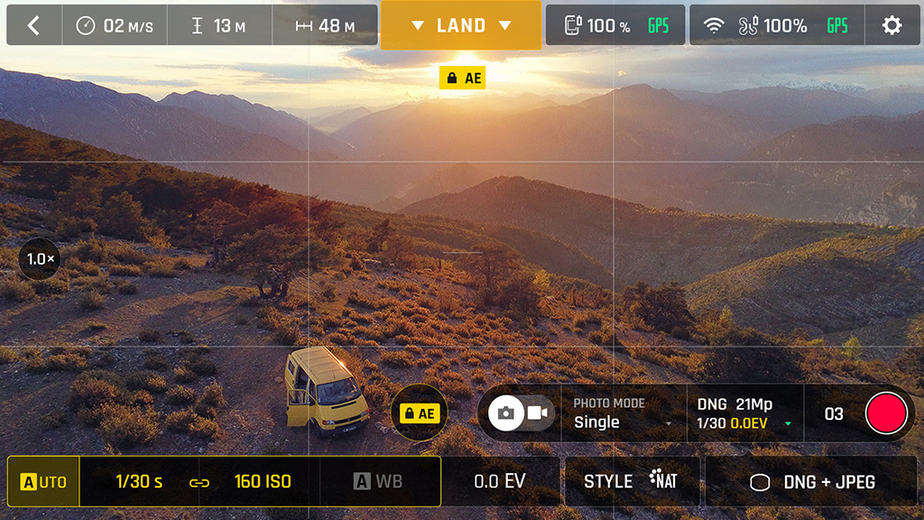
ARCADE MODE – is selected from the Freeflight 6.6 App and exclusive to the FPV package. Essentially, it allows you to manipulate the drone camera with greater ease – the less complicated it is to capture drone footage, the less complicated the drone flight should be, and ultimately the safer and more fun your flight experience will be.
SLOW MOTION – records all your video footage automatically and instantly in slow motion, and this feature is amazing for those wanting to create action based videos, and who don’t want to do any post-flight editing.
HYPERLAPSE – records all your video footage automatically and instantly in fast motion – producing the opposite effect to your slow motion feature – by immediately accelerating your videos so you can capture a sunset, a sunrise or even passing clouds at ultra fast speed.
CAMERAMAN – is an automatic framing assistant that allows you to lock in on a subject, leaving you to focus on controlling your Anafi, as the camera records the object you have chosen and it’s every move.
FOLLOW ME – is another visual tracking feature commonly included in most modern consumer drones at this price point, and is on available to the entire Anafi range. Follow Me enables you as the pilot, to remain as the focal point of the video, and works a treat if you’re looking to record yourself doing an activity such as hill climbing, bike riding, running, dancing or skating.
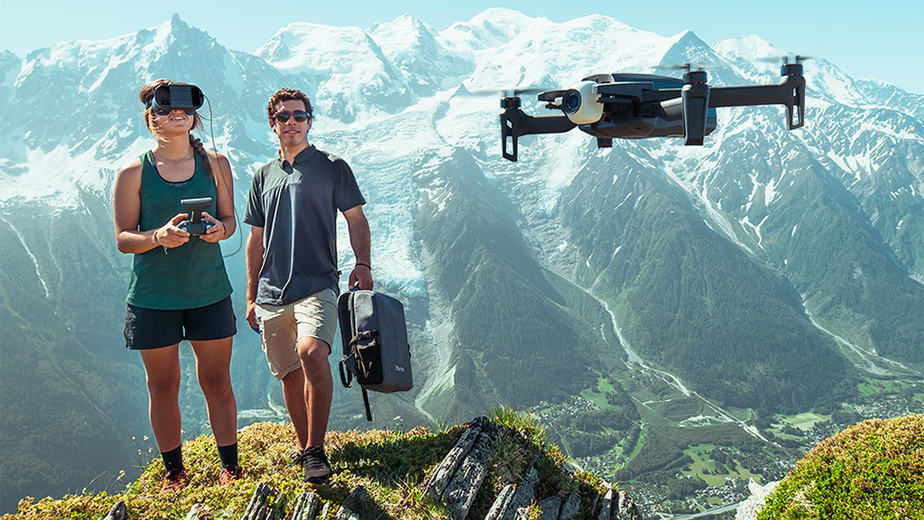
NOTE: At the time of writing, Parrot have chosen to make the Follow Me feature and another feature called Flight Plan (mentioned below), an ‘in-App purchase’. We find this decision confusing and disappointing, especially when you consider the cost is only US$0.99 each. Why not just avoid the extra step and include it, instead of making the pilot jump through an extra couple of steps before taking to the skies? Doesn’t make sense to us and we hope Parrot change their position on this in the future.
DOLLY ZOOM – allows you to change the perspective of the image you have taken, without changing the size and clarity of the subject in the image. It’s a seriously fun feature to have on your drone, especially if you’re a keen photographer.
BOOMERANG MODE – is another flight mode that does exactly as the name suggests. Enabling that, and your Anafi will follow a boomerang flight trajectory, while recording everything clearly and comprehensively. It offers a unique perspective, and not many drones in this price category have that.
ORBIT MODE – is now a pretty standard feature on most drones. However, not many drones delivers this feature with the accuracy and quality that the Anafi does.
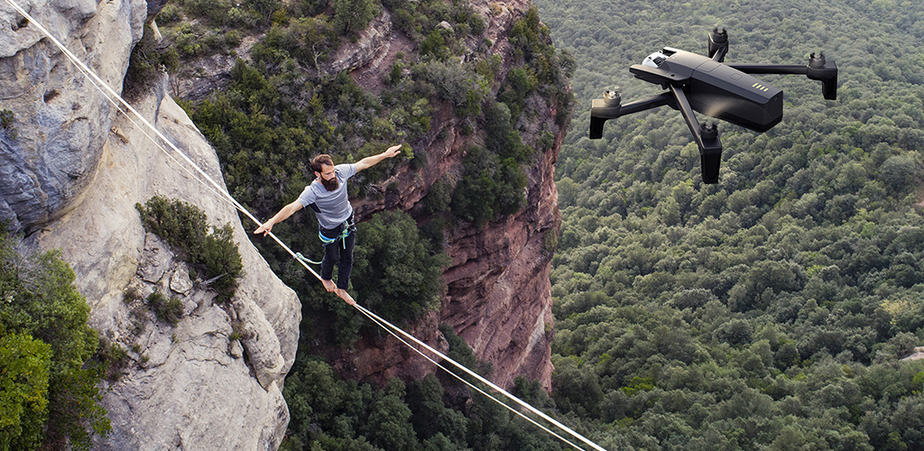
PARABOLA MODE – allows your Anafi to pursue a flight trajectory that will take it from the front of you to your rear, almost like a bow. It’s a cool mode that offers something a little different.
360° CINESHOT – gets your Anafi spinning 360°, filming your surroundings in one smooth cinema style video.
REVEAL CINESHOT – moves your Anafi forward filming the ground, gradually lifting its camera to reveal the landscape on the horizon.
EPIC CINESHOT – commands your Anafi to gradually fly away at a distance of 60 meters, putting the landscape in perspective.
RISE CINESHOT – has your Anafi rising with the camera facing the ground and gradually turning towards the horizon, ending with a panorama revealing the backdrop.
TOUCH & FLY WAYPOINT – allows you to explore your surroundings without piloting the drone, by simply pointing to positions on the screen of your smart device.
FLIGHT PLAN – enables you to plan your exact flight path on the map, then sit back and enjoy the scenery as your Anafi takes off for an automatic flight. (As mentioned earlier, this is an ‘in-App purchase’ similar to Follow Me.)
POINT OF INTEREST – has your Anafi flying around a particular point that you’ve selecting on your screen, enabling you to catch this area from all angles.

Anafi Battery + Charging
Before buying a drone, most people spend the majority of their time researching the features and benefits that each drone offers – and it’s true, it is an important part of the process.
However, in our experience most people also fail to go that extra step and do their correct due diligence on things like customer service, range of accessories, firmware updates, and the big one for us – drone batteries and drone battery charging.
Something we love about the Parrot Anafi range is that you can charge the drone while you’re on the go, thanks to its ‘everyday’ USB charging system.
This means you can charge your Anafi and Skycontroller from your phone, tablet, computer and even car charger, and not just from a traditional power bank – perfect for when you’re travelling and don’t have access to instant wall power.
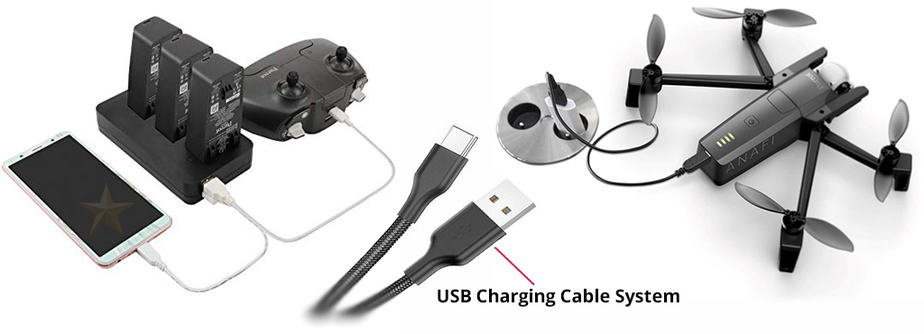
The Anafi Skycontroller has a capacity of 2500mAh and a life of around 2-hours and 30-minutes on Android, and 5-hours 30-minutes on iOS. It can be charged using a USB-C (charge) to USB-A (connection) with a voltage of 3.6V.
The Anafi Drone Smart Battery is a high density 2 cell Lipo with a capacity of 2700mAh and a life of around 26-minutes. It can be charged using a USB-C with a voltage of 7.6V and a maximum charging power of 24W. It generally takes about two hours to charge the Smart battery (sometimes a little more, depending on how you’re charging it).
An additional Smart battery will cost you around US$99, but remember, you do have the option to invest the Extended package for around US$300 more than the Standard package, and it includes two smart batteries plus a stack of other accessories.
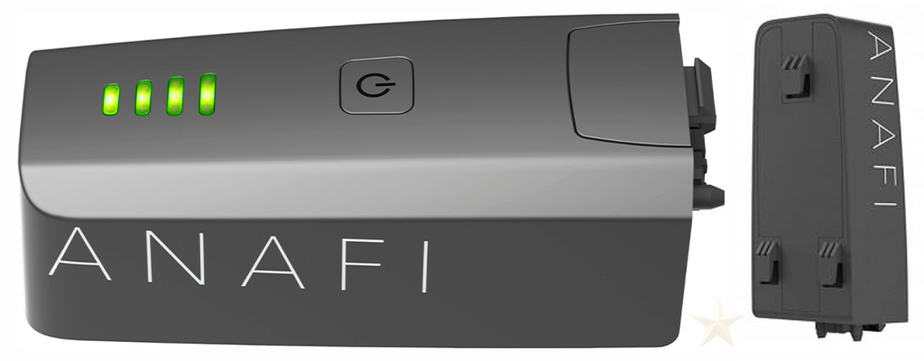
Anafi Skycontroller
Parrot claim their new Skycontroller 3 version is 30% smaller than its predecessor (released in September 2018) which is great for travelling with.
If you choose to invest in the Standard or Extended package, the controller weighs in at 386g with folded dimensions of just 9.4cm x 15.2cm x 7.2cm and unfolded of 15.3cm x 15.2cm x 11.6cm. Interestingly, this is almost 50g more weight than the drone itself!
If you choose the FPV package, the controller weighs an incredible 99g less, at a weight of 283g, and has the exact same folded dimensions of 9.4cm x 15.2cm x 7.2cm and same unfolded of 15.3cm x 15.2cm x 11.6cm.
Both controllers operating frequency is 2.4 – 5.8 GHz via dual Wi-Fi connection, with a maximum transmission range of 4km.
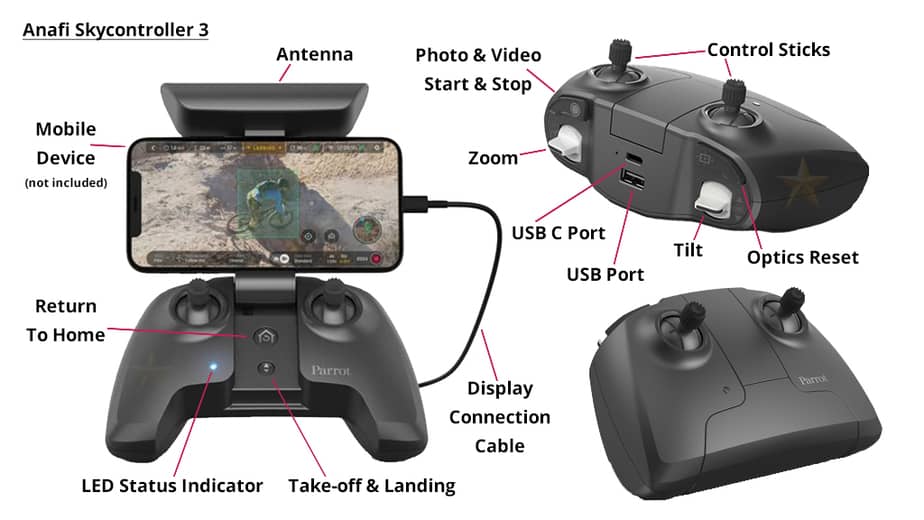
Some Features We Love
- The 25-minute flight time on all Anafi drones is a major plus point.
- We love and think the innovative 180° vertical tilt gimbal on the camera is just brilliant.
- The 2.8X lossless zoom can make a genius of anybody shooting footage on this drone, regardless of experience.
- The 25-minute flight time and battery life is one of the best we’ve seen.
- The Anafi has one of the best wind resistant tolerances of any drone in this category, and it’ll definitely enhance your flight experience.
- The official 4km transmission range and flight distance from home point on this drone is impossible to ignore.
- The insane number of automated flight modes and safety features available to you as an Anafi pilot.
- The lightweight structure allows you to quickly deploy your Anafi by hand-launching it when you’re in terrain that’s uneven or damp.
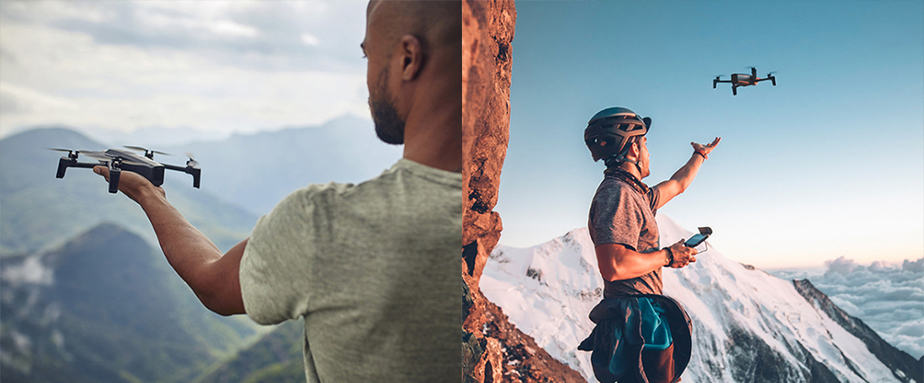
Mmm, Some Things To Consider
- The autonomous features of the Parrot Anafi drone might just be enough to relegate it to second place, behind the drone manufacturer it is trying to dethrone… DJI. When you are competing with something like the Mavic Air, you probably need obstacle avoidance capabilities that match it.
- Follow Me and Waypoint require an additional in-APP purchase. You expect features like that to come with a drone that you have already paid this much for.
- Return Home is locked in at 20 meters in height, which you need to be mindful of if flying around tall structures. Remembering there is obstacle avoidance, this might present problems for some.
Alternative Options
When you’re researching what drone to invest in, it’s impossible to ignore the Chinese manufacturer DJI. Afterall, they have an impressive reported market share of 76.8%, with their nearest competitor being Intel at 3.7%, Yuneec at 3.1%, Parrot at 2.2% and GoPro at 1.8%. So it’s clear we’re in a DJI dominant industry, for now.
And so, most people spending upwards of US$600 is likely to be asking themselves, do I buy a DJI, or go against the grain and buy something else?
Of course we’re not here to tell you what you should do – but what we can tell you is that we own drones made by both companies, DJI and Parrot, and they both produce exceptional products that are great value for money.
Listed below are the two most common DJI products that you might consider investing in as opposed to the Parrot Anafi.
DJI Mavic Mini?

The brand new DJI Mavic Mini – released in November 2019 – will cost you around US$399 for the Starters package and US$499 for the Fly More Combo package, which makes it hard to ignore.
By way of comparison, the Mavic Mini camera shoots in 2.7K versus the Anafi at 4K, and with 12MP (Megapixels) versus the Anafi’s 21MP.
You can also expect to get a top speed of around 47kph with your Mavic Mini, versus 55kph with your Anafi.
With the Mavic Mini, we do like the fact that it’s just 249g – 1g below 250g, which is a standard that’s becoming more important to worldwide aviation regulatory bodies, that drone pilots need to be aware of. The Anafi caps out at 320g.
However, to get your weight down to 249g, DJI have had to compromise on build quality, and we do find the Mavic Mini more ‘plasticky’ than the Anafi, which just feels more robust.
In truth, both these drones aren’t really in the same category, but we’ve included the Mavic Mini partly because it’s new and getting a lot of attention right now, and partly because it is an impressive drone and does present very good value for money at that price point.
In our opinion, the Mavic Mini might be a better option if this is your first ‘serious drone’, or you’re stepping up from a toy. But if a better camera quality and flight performance is what you seek, we do think the Anafi will probably provide you with that. Either way, both are great drones.
DJI Mavic Air?

Another drone worth mentioning is the DJI Mavic Air, and this is a more realistic alternative to the Parrot Anafi. It has a similar price point to the Anafi Extended range of just under US$1,000 for the Fly More Combo.
When comparing the two, the Mavic Air weighs 430g, which is 90g more than the Anafi, at just 320g. This isn’t a noticeable difference when your drone is in flight, as the Anafi also has a much better maximum wind resistance of 31mph (50kph) versus the Mavic Air at around 24mph (38kph). Where you might notice the weight difference however is when the drone is in your bag and you’re travelling with it.
DJI claim flight times of up to 21-minutes on a full battery, but we’ve always found it to be closer to 19-minutes depending on the environment you’re flying in. Compare that to the Anafi which was a consistent 25-minutes from our tests.
Where you’ll find the Mavic Air vastly outperforming the Anafi is in the category of top speed – with the Mavic Air reaching speeds of 42.5mph (68kph) in sports mode, versus the Anafi getting up to 33mph (55 kph).
In addition, the Mavic Air also has those coveted obstacle avoidance sensors, which for us is the biggest and more relevant difference between the two drones. So being aware of potential collisions before your automated flights in the Anafi is something you will definitely need to be thinking about.
What we do like about the Anafi is its high tech 180° vertical tilt gimbal, which gives for a much more dynamic range of cinematography. Compare the -90° downwards and +90° upwards range on the Anafi, versus the -90° downwards and the +17° upwards range on the Mavic Air, and if you’re a creative pilot, this could be a deciding factor in the decision you make.
In short, the Parrot Anafi is an outstanding drone, and we feel it’s a real genuine competitor to its DJI counterparts in a similar price range. It has a superior camera and a better battery, and is comparable in its design, performance and cost. But it does lack one or two features that might swing where you put your money – unless that is, you’re confident with your piloting skills and these features aren’t as important to you.
Real World Experiences
We strongly suggest you do your own research and read as many reviews about a product as you can. That way you’ll be better placed to make a more informed decision on whether something is right for you.
And it’s true. If you do enough research, in most cases you’ll find people who are happy about a product, and people who are not. We’ve been happy with our Parrot Anafi, and we found these customer reviews on Amazon which matched our experiences.
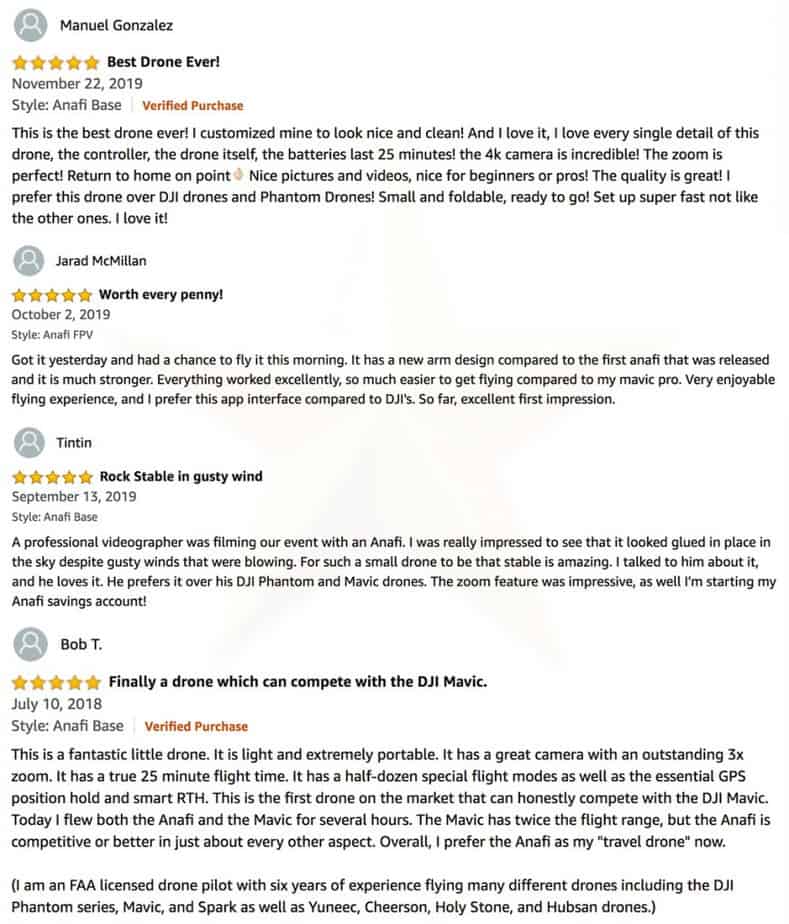
The Bottom Line
We started this review by saying that with the Anafi, Parrot have certainly made a statement that they’re now ready to compete with the best in the business as a maker of ‘serious drones’… and we stand by that.
Sure you might not get everything you want, and you may need to compromise on some features, but no drone under US$1,000 ticks all the boxes, and that includes DJI. With the Parrot Anafi range of drones, you’re going to go close though.
